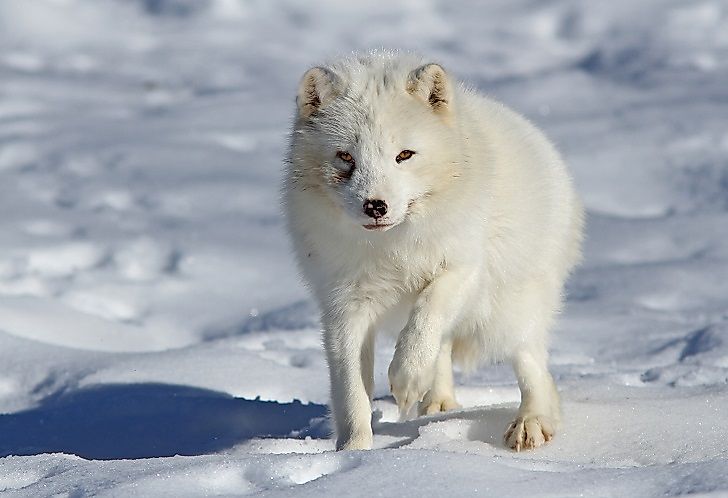Which Animal Type Has The Same Body Temperature In The Winter And In The Summer?
Endothermic (Warm Blooded) Animals

5. Defining Endothermic Animals
Endothermy is a feature that appeared late in the development of animals, and is establish only in modernistic animals. Warm-blooded animals are also called endothermic or homoeothermic animals, and they generate heat internally and take a thermoregulatory system that maintains a constant body temperature largely independent of their surround. They also tend to maintain the aforementioned temperature through out their lifetime. Warm-blooded animals use well-nigh of the food they eat to convert it to energy to stay warm, with the assist of mitochondria plant in each cell. Merely a small amount of food they eat is converted to body mass. Smaller animals in detail accept to feed intensively, particularly nutrient with high free energy contents, such as seeds, insects, or other smaller animals. The larger animals demand less food. Unremarkably the body temperature is more than the environment. It is more difficult for warm-blooded animals to loose warmth than to stay warm.
4. Notable Examples
Humans, which are warm-blooded, maintain a abiding temperature of around 37° Celsius. Most mammals, small-scale and big, besides as many birds, are warm-blooded animals. Therefore all primates (such every bit humans, apes, and monkeys), cats (tigers, cheetahs, and domestic cats), rodents (rats, beavers, and chipmunks), marsupials (kangaroo), weasels (badgers and meerkats), monotremes (platypuses), sea mammals (whales, seals, walruses, manatees, and dolphins), dogs, pigs, and elephants are warm-blooded. Some birds, however, are non warm-blooded. Moreover, another mammals, such every bit bats, mole rats, and echidnas, are neither warm-blooded or common cold-blooded.
3. Evolutionary Adaptation Mechanisms
Since they are not dependent on the surrounding environment to maintain their body temperatures, warm-blooded animals can live in both warm and common cold places. They have various strategies to preserve warmth, including a thick fur which they may abound in winter and shed in summer, or the feathers of a bird, or the blubber in bounding main mammals. In that location are also various behavioral responses including shivering, migration, or hibernation in cold temperatures. Some birds migrate over thousands of kilometers to get stay in places of optimum temperatures. There are also many pocket-size birds, and mammals that are known to hibernate even though they are warm-blooded, such as the California mouse and the kangaroo mouse. Sweat glands are used to lose heat; in primates and humans these are present all over the body, while in cats and dogs the glands are institute only on the feet. Panting is another mechanism to lose oestrus.
ii. Benefits Of Endothermy
Warm-blooded animals generally exercise not accept to hibernate besides a few exceptions, and they can exist agile throughout the year, feeding, moving, and protecting themselves from predators. Though the warm-blooded animals have to consume a lot of food to remain active, they accept the energy and means to colonize all kinds of environments, fifty-fifty in cold Antarctica or in higher mountain ranges. They can besides move longer distances and are faster than cold-blooded animals.
i. Disadvantages Of Endothermy
Since the body temperatures of warm-blooded animals remain stable, they provide suitable living conditions for many parasites, such every bit worms, or micro-organisms including leaner and viruses, many of which tin cause fatal diseases. As the warm-blooded animals generate their own heat the torso ratio of weight to surface is also important. A larger body mass produces more warmth, so a big body surface is used to lose estrus in summer or in warmer places, therefore the big ears in elephants. Therefore, warm-blooded animals cannot be every bit small in torso size as cold-blooded insects tin be.
Source: https://www.worldatlas.com/articles/endothermic-warm-blooded-animals.html
Posted by: tejadacoloutere.blogspot.com

0 Response to "Which Animal Type Has The Same Body Temperature In The Winter And In The Summer?"
Post a Comment